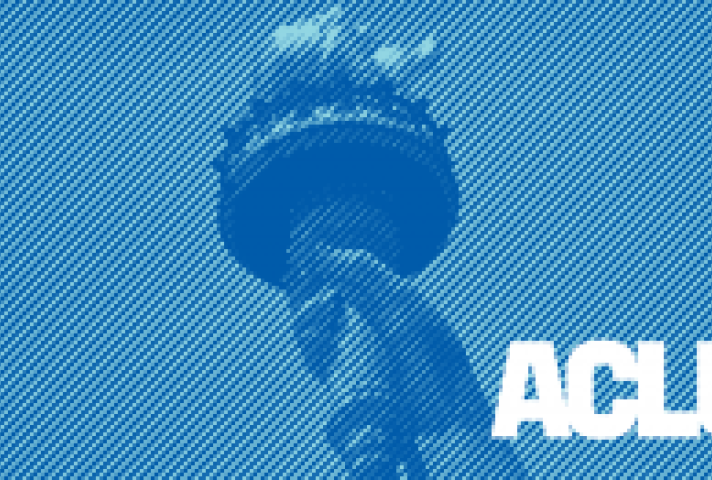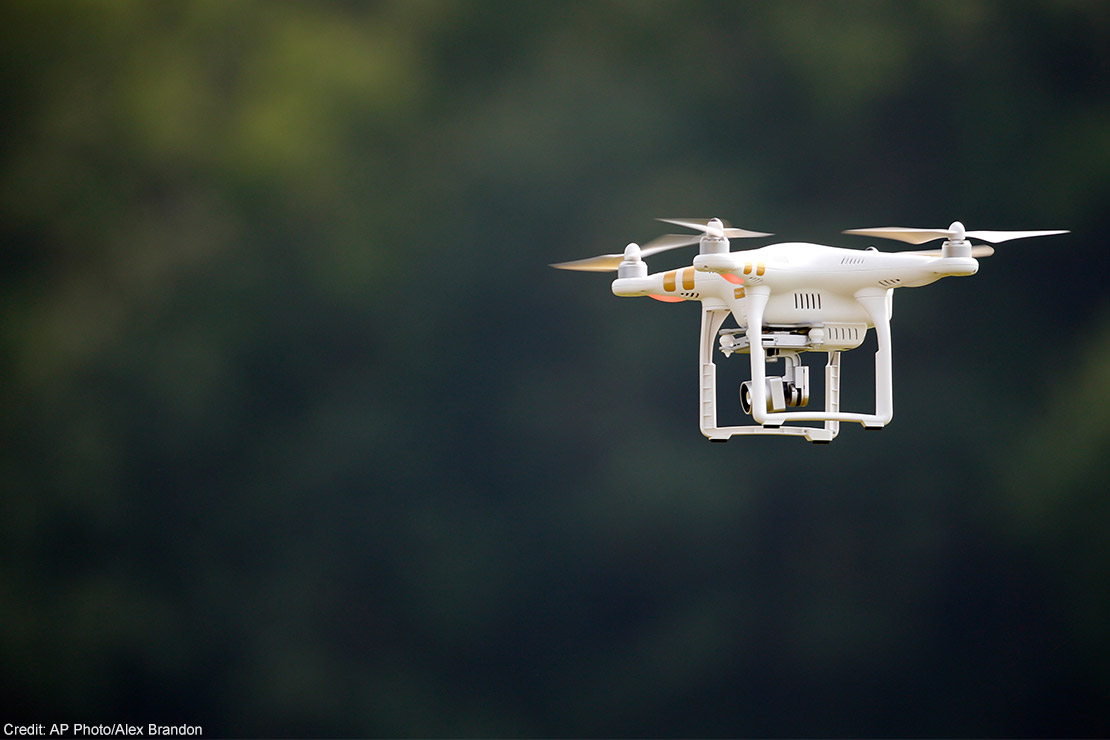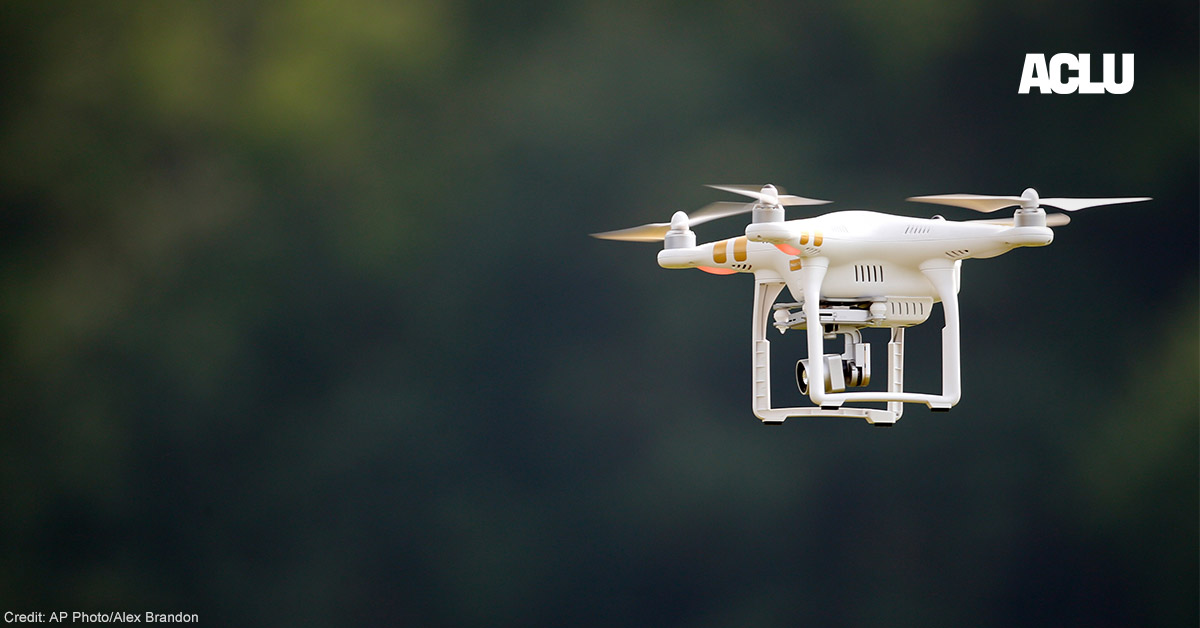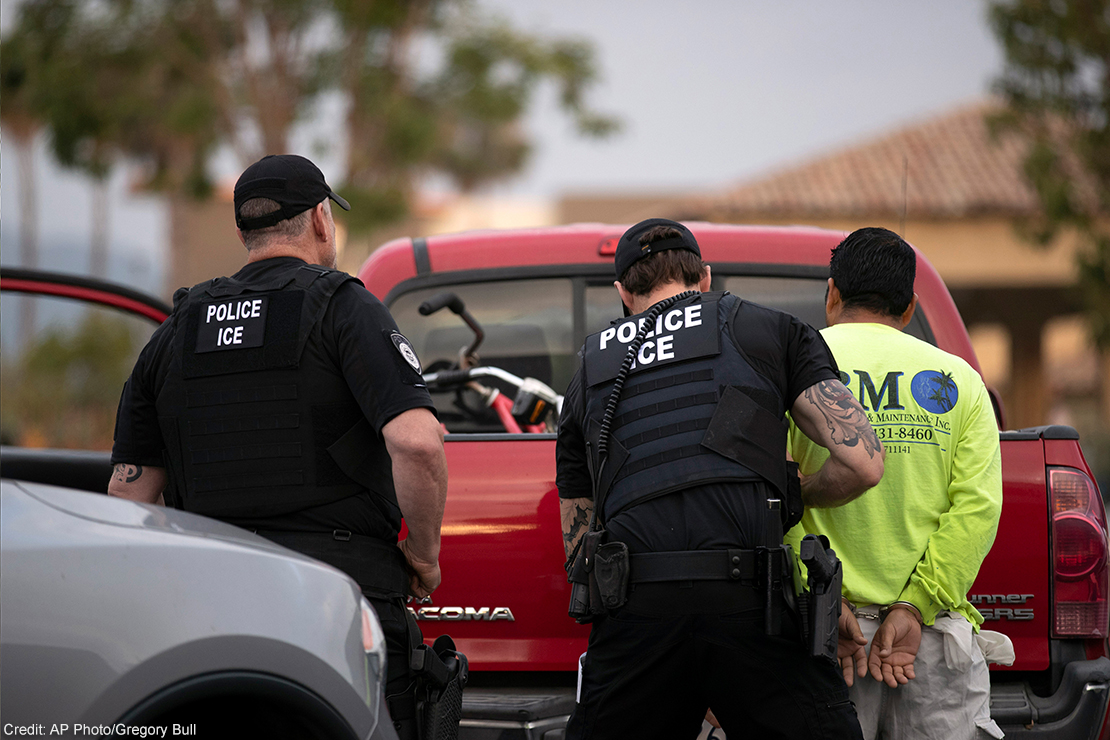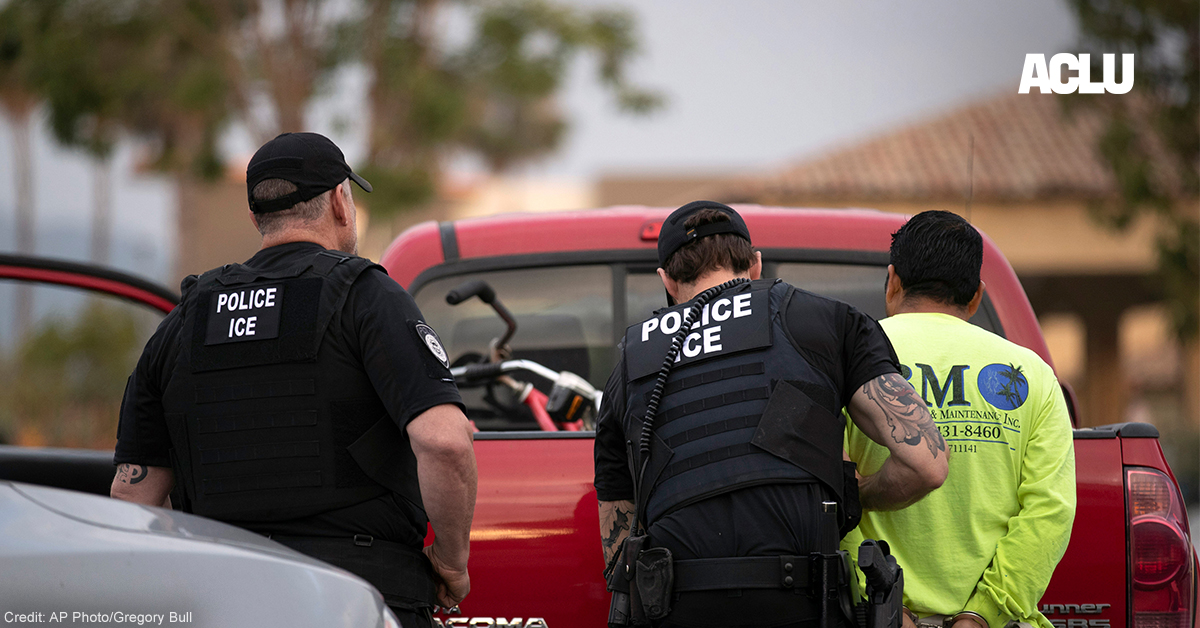Jay Stanley, Senior Policy Analyst, ACLU Speech, Privacy, and Technology Project
The Federal Aviation Administration recently took a major step toward expanding the prevalence of aerial drones in American life by creating a system for identifying and tracking them. The new system is part of a steady march by the FAA to build a legal and technological infrastructure that allows for much greater freedom for drone flights.
Since drones first came to real public attention about a decade ago, the technology hasn’t lived up to either its promise or its threat, primarily due to the FAA’s cautious approach to allowing drone flights. Historically, drones (known more formally as unmanned aircraft systems, or UAS) were not allowed to be flown at night, over people, or beyond the visual line of sight (BVLOS) of their operators. That approach was never going to allow drones to live up to the promise of TacoCopters, Amazon deliveries, or autonomous flight — i.e. self-navigating drones not under the remote control of a human pilot on the ground. They also kept at bay the threat of pervasive aerial surveillance.
The FAA’s rulemaking creating a “Remote ID” infrastructure for identifying and tracking drones was accompanied by another rulemaking that loosened the restrictions against nighttime operations and flights over people. These rules have been seen as a crucial prerequisite for greater freedom for drone flights. The reason? Security. A regulatory framework permitting routine BVLOS flights was never going to happen, as an FAA advisory committee put it, “until the law enforcement and national security communities are comfortable with their ability to identify and track” drones.
The security concerns around UAS are very real. Amateurs and others have attached guns and flamethrowers to drones, and in 2012 a man was convicted of plotting to blow up the Capitol and Pentagon using a drone.
But just how much tracking is needed? A nationwide government system for tracking drone usage implicates several civil liberties interests, including the privacy of people on the ground, the privacy of drone users, and First Amendment interests in public photography. Such a system threatens to erase any possibility of anonymous operation of drones so that, for example, an activist wishing to record corporate malfeasance or police actions at a protest might be targeted after the fact, or chilled before it.
In our view, while that represents a real loss, the privacy interests of people on the ground take precedence, given the strong potential use of drones for mass surveillance. As a result, we think the concept of a system akin to “license plates” for drones is not unreasonable. Aircraft, like cars, can affect the safety of others and thus are highly regulated. Drone “license plates” would provide accountability for drone operators and could help protect privacy by giving everybody the ability to identify who owns a drone flying overhead.
There were a number of ways the FAA could have structured a tracking and identification system. Car license plates can be seen by anybody near a car — and only those near the car — but generally nobody except the police can look up the identity of the person to whom a vehicle is registered. Piloted aircraft also carry a visual unique identifier called an “N-number,” but unlike car license plates, anyone can look up their registered owner in a public FCC database. (Though to protect privacy, the FAA does offer an option for piloted aircraft to apply to obtain a temporary address not linked to the aviation registry, but known only to the FAA.) Furthermore, in much of the nation’s airspace, all aircraft are required to broadcast their N-number through radio transmissions. That means they can be identified even when too far away for their N-number to be read, and it means that they can be tracked through a nationwide bird’s-eye view of the nation’s airspace.
So which system did the FAA choose?
In its initial proposed rule issued in 2019, the FAA announced that it wanted to require drones to connect to the internet and constantly transmit their registration ID and location to one of several private companies that would aggregate that data and share it with the FAA and law enforcement. This questionable arrangement would have given private companies — but not the public — a bird’s-eye view of every drone currently flying in the United States.
However, after receiving over 50,000 public comments (including from the ACLU), the FAA in its final rule dispensed with the internet connection requirement and confined its rules to requiring an alternate technology: broadcast transponders that would broadcast their unique ID numbers locally to anyone within range. We think this is good; the broadcast Remote ID should be sufficient to achieve both the security goal of allowing facilities to identify and deter illegal or hostile drone flights and the privacy goal of empowering individuals to know what aerial cameras may be recording them.
In its new regulations, the FAA does say that it intends to allow drone operators to obtain a “session ID” — an ephemeral identifier (akin to that available to piloted aircraft) that would shield the operator from having their identity connected to a particular drone. While that would be a good thing for professional and citizen journalists, it would also mean that members of a community may have no idea whether a drone hovering over their home belongs to Amazon, the police, or the kid who lives down the street. And the public won’t be able to track the activities of corporate or police drones over time. The FAA says that the details of session IDs will be worked out in a future rulemaking. In our view, if there’s to be a session ID, it should not be available to police or other government drones (other than perhaps in exceptional circumstances where there is a strong immediate justification for such secrecy), or to corporate drones flown by companies like Amazon or Google.
This is the infrastructure that will govern drone flights in the U.S. moving forward. Drone manufacturers have 18 months to start building transponders into drones, and operators have 30 months to retrofit their drones with transponders. The session ID issue aside, the FAA is doing a good job in building an infrastructure that will give us the ability to know what “eyes in the sky” are observing our streets, communities, and cities. While details still need to be worked out, the agency’s goal seems to be a system in which anyone can see the “license plate” of nearby drones on their cell phones.
That capability, advanced by the FAA’s new Remote ID rule, will become increasingly important if drones proliferate in American life — if they prove practical as everyday delivery vehicles, for example, or if, despite our opposition and that of many communities, drones are allowed to engage in routine or mass surveillance over our cities and towns. At the same time, the FAA’s new rule itself just brought all of those things much closer to reality.
https://www.aclu.org/news/privacy-technology/new-government-tracking-system-paves-the-way-for-expanded-role-of-drones
The FAA's new drone tracking regulations represent a major step in expanding the prevalence of drones in American life.
